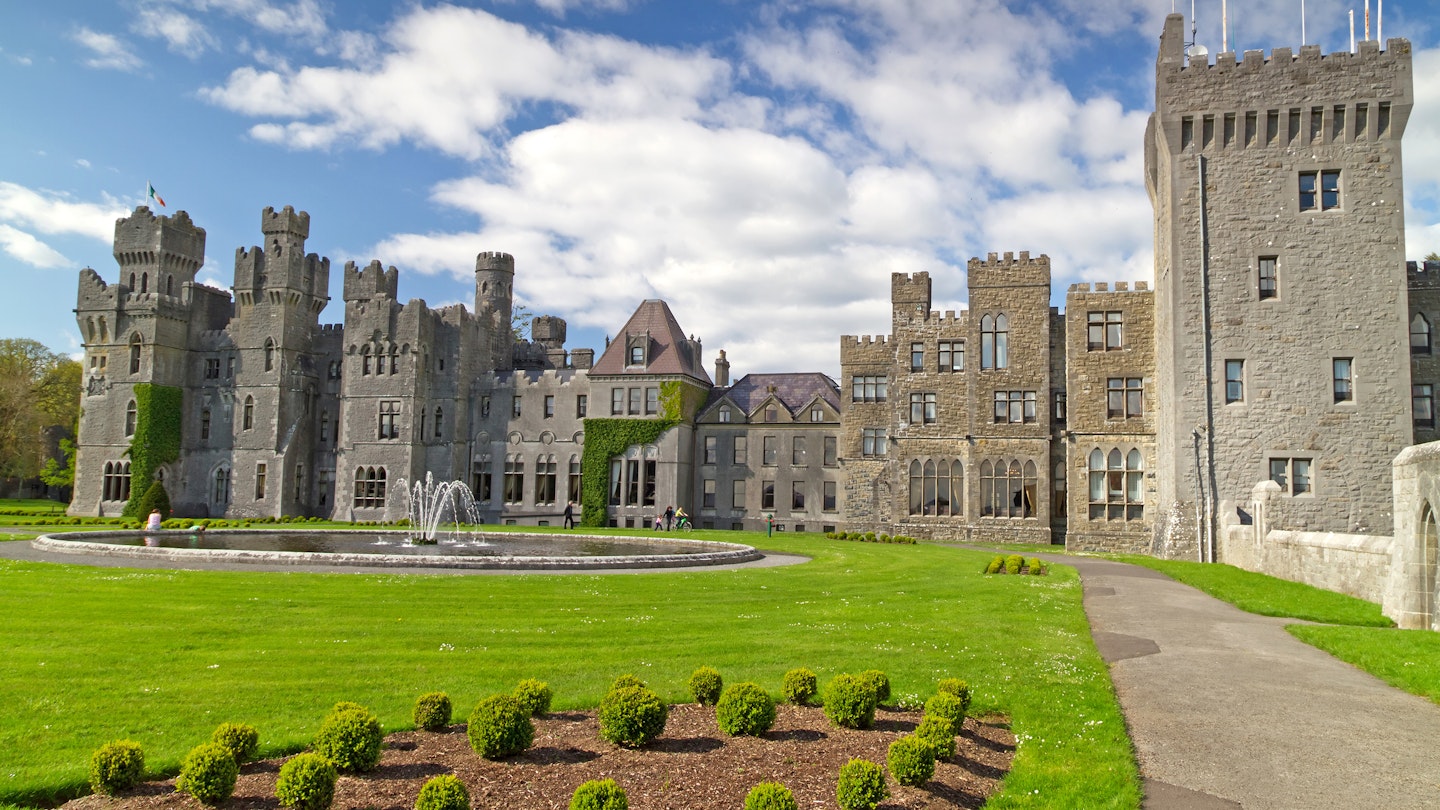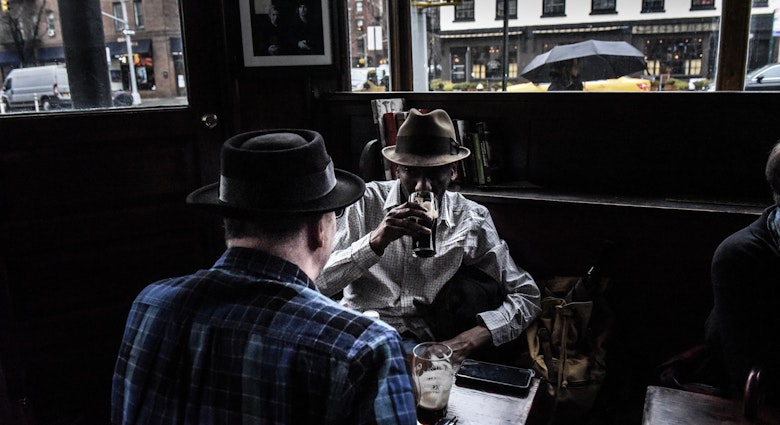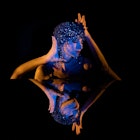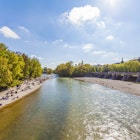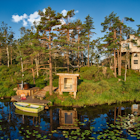Castles – whether ruined, regal or otherwise – are a feature of the Irish landscape. With 3000 or so spread across the country, there’s no shortage of history and grandeur on display.
Found high upon a perched crag or in the rolling green countryside, here are ten castles not to miss when travelling in Ireland.
Ashford Castle, County Mayo
A contender for Ireland’s finest hotel is the 19th-century regal hunting and fishing lodge created by Arthur Guinness (of stout fame) out of a castle first built in 1228 as the seat of the de Burgo family. Guinness’ Victorian-style extensions were added to the original building, which itself had been transformed in 1715 into a French-style chateau; in the late 19th century the extensions were given a neo-Gothic makeover resulting in the building you see today. Despite its many styles, Ashford Castle is a stunner – and that’s before you even step inside to find a five-star luxury hotel with all the trimmings, including a sumptuous spa and its own cinema.

Blarney Castle, County Cork
Proof of the power of a good yarn, crowds flock to this 15th-century castle to kiss the Blarney Stone, which supposedly gives one the gift of gab. The stone itself may be one of Ireland’s most popular tourist attractions, but the remainder of this castle is worth exploring – if only to climb the spiral staircase and walk the battlements of a proper medieval structure. But you can also vanish into its oft-ignored gardens: the gorgeous Fern Garden and Arboretum, the Harry-Potterish Poison Garden and the landscaped nooks and crannies of the Rock Close.
Carrickfergus Castle, County Antrim
Ireland’s most impressive Norman castle is also one of its oldest: established in 1177 by John de Courcy right after he invaded Ulster, it remains the best preserved medieval structure in Ireland – despite being besieged in turn by the Scots, Irish, English and the French. The castle’s central role in Irish history is explained in detail in the museum: the castle overlooks the harbour where William of Orange landed in 1690 on his way to fight the Battle of the Boyne. In 1778, American naval commander John Paul Jones won an hour-long sea battle with a Royal Navy vessel in the waters of the harbour.
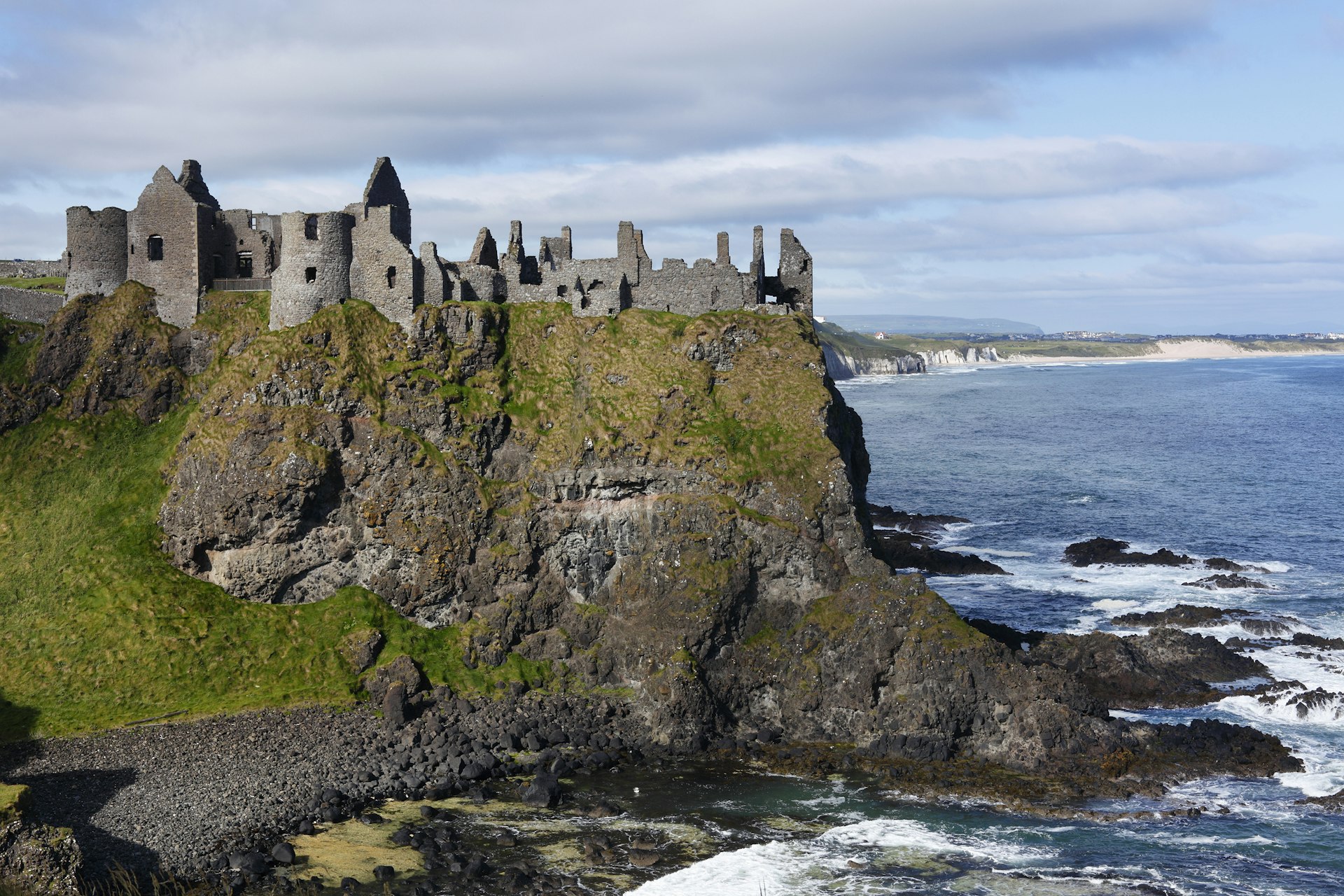
Dunluce Castle, County Antrim
Location-wise, Dunluce is breathtaking – a ruined castle perched on a stone crag overlooking the sea. It was built in the early 16th century by the McQuillan family before it was seized in 1550 by the MacDonnell clan, who later took on the title of earls of Antrim. The castle has known its fair share of drama: the military ship Girona was wrecked on the rocks beneath it during the Spanish Armada of 1588, with only nine survivors among its crew of 1300; 51 years later, part of the castle collapsed into the sea along with seven servants. It is thought that Dunluce was the inspiration for CS Lewis’ castle Cair Paravel in The Chronicles of Narnia.
Enniskillen Castle, County Fermanagh
Sometime in the 1420s, Hugh ‘the Hospitable’ Maguire established this impressive castle on the banks of Lough Erne. But he didn’t have many opportunities to live up to his nickname, as he went on pilgrimage to the Holy Land and died upon his return in 1428. Successive heads of the Maguire clan – later titled the lords of Fermanagh – improved on Hugh’s original keep, whose twin-turreted Watergate still looms over passing fleets of cabin cruisers on the lake. The castle is now home to the fascinating Fermanagh County Museum and, on the ground floor, the Lakelands Gallery, where you’ll find a 1000-year-old 35lb block of butter that was preserved in a bog until it was dug up in 1980.
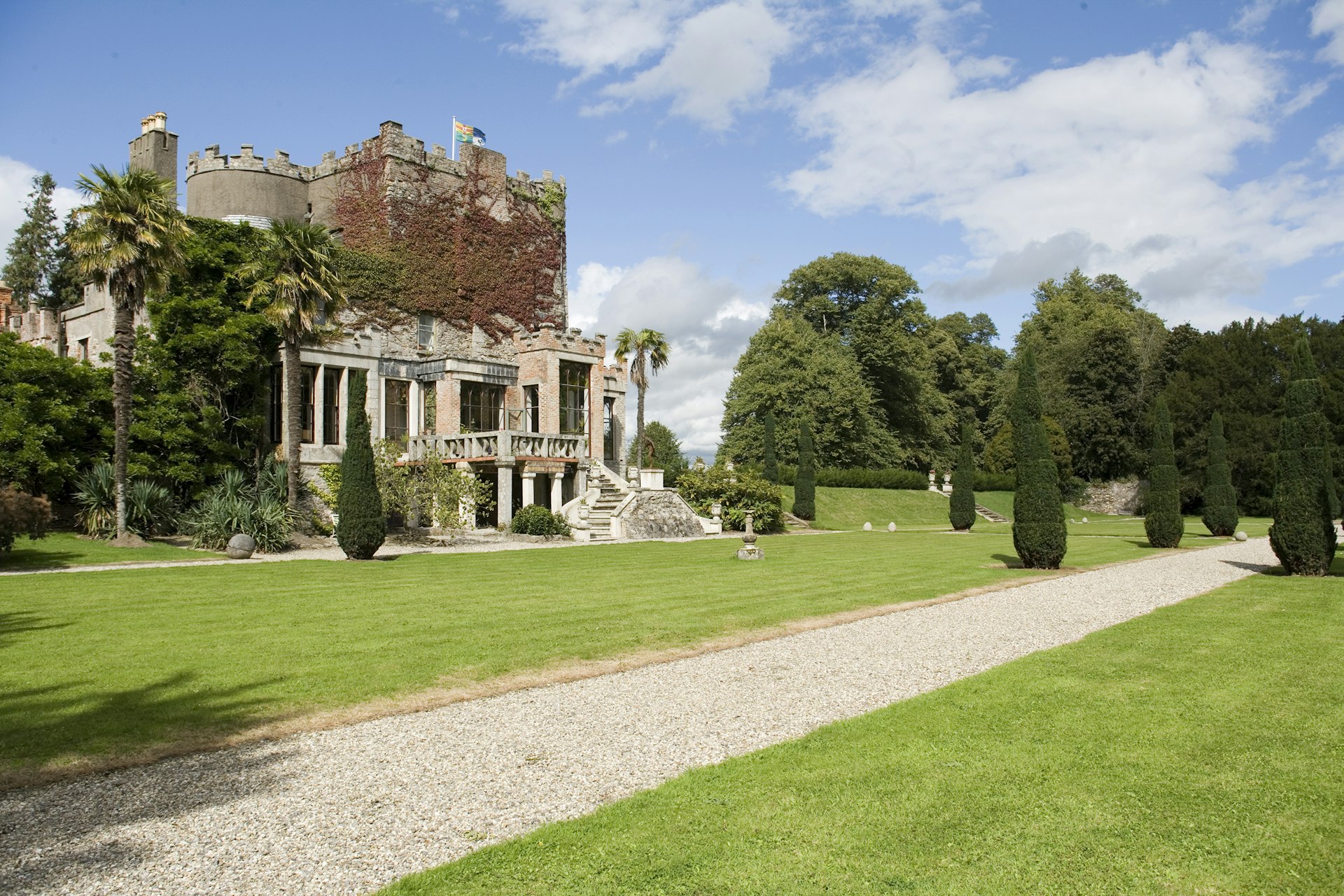
Huntington Castle, County Carlow
Irish history made it difficult for castles to have the same owners through the centuries; but not so for the Esmonde family, who’ve held on to Huntington Castle since it was constructed in 1625. Still, they’ve added bits along the years, including Georgian terraces, flamboyantly castellated Victorian extensions and, in the old dungeon, a temple of the Fellowship of Isis, a religion established by the current owner’s aunt and uncle in 1976 – a year after Stanley Kubrick used the castle as the setting for Barry Lyndon.
Kilkenny Castle, Kilkenny City
Once the stronghold of the powerful Butler family, this huge castle is one of Ireland’s most visited heritage sites. Although it was originally established in 1192 on a wooden tower built 20 years earlier by the Anglo-Norman conqueror of Ireland, Richard de Clare (aka Strongbow), most of what you see today dates from the 19th century, when it was given a huge Victorian overhaul. The most eye-catching room is the Long Gallery, with its painted timber roof and carved marble fireplace. The walls are lined with portraits of generations’ worth of notable Butlers. The basement houses one of Ireland’s finest contemporary art galleries.
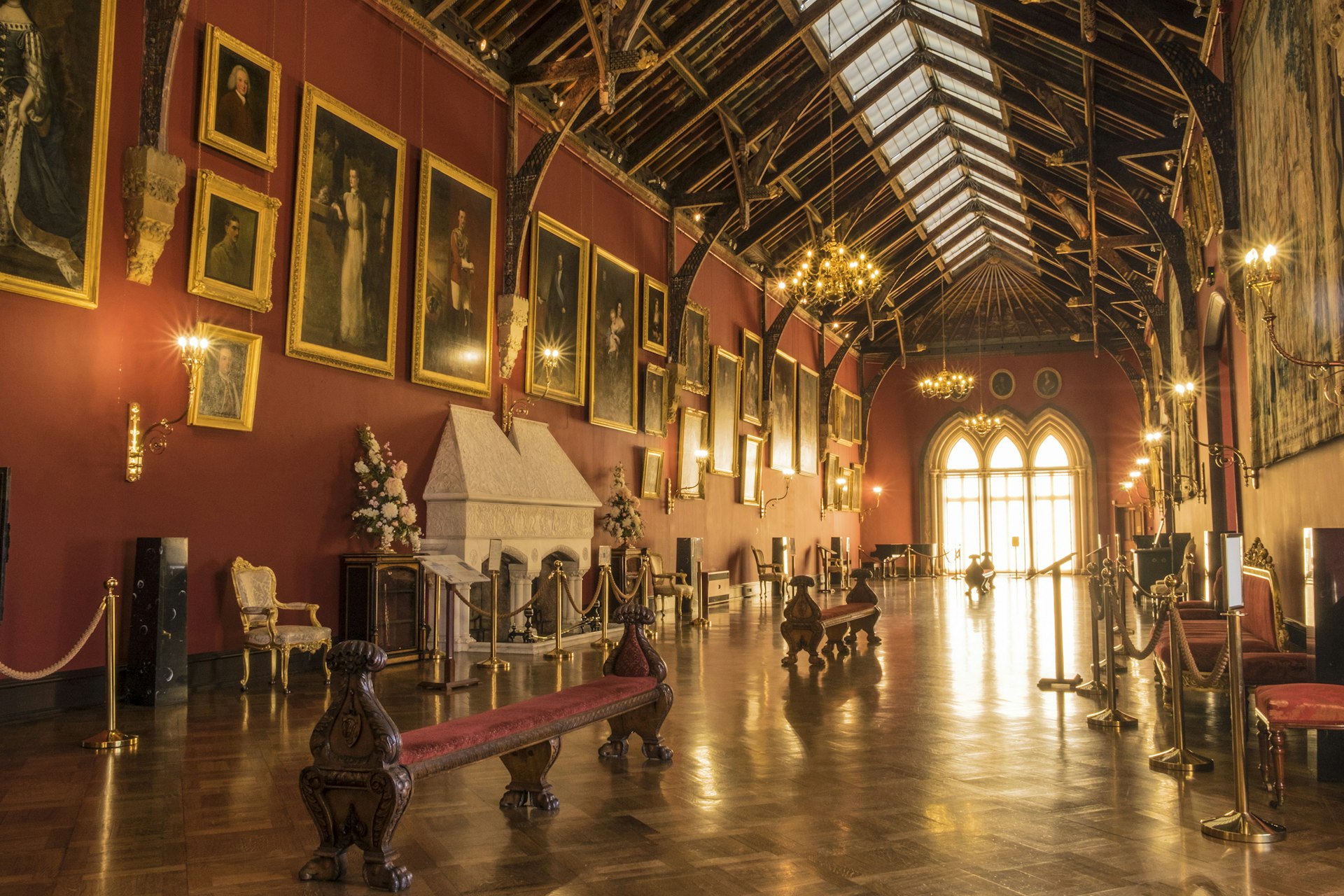
Malahide Castle, County Dublin
For over 800 years until 1976, the Talbot family home was Malahide Castle, on the edge of a handsome suburban village in north County Dublin. The three-story tower house is the only bit that remains of the original castle, built in 1185; much of the rest was added in subsequent centuries, including the 18th-century drawing rooms and the Gothic revival corner turrets, built according to 19th-century fashion. The 45-minute guided tour takes you through much of the house to the Great Hall, where 11 members of the Talbot family ate supper before dying at the Battle of the Boyne in 1690.
Trim Castle, County Meath
If you need proof of the durability of a medieval castle, the mighty keep at Trim is it. Basically unchanged since 1200, the 25m-high building is mounted on a Norman motte and is surrounded by a 450m-long outer curtain wall. Inside, the ground floor has models of what the castle would have looked like in its heyday, including a handsome whitewash on its outer walls. The tour takes you to the battlements at the top, from where you can imagine being a 17th century defender fighting off Cromwell’s attacks. You failed, by the way, as Cromwell took the castle in 1649. The castle had a starring role in 1995’s Braveheart, as the Tower of London and Edinburgh and York castles.
Cahir Castle, County Tipperary
Mighty Cahir Castle looks like a medieval castle should: massive walls, mullioned windows and thick walls are all surrounded by a broad moat. Founded in 1142, it was heavily damaged by cannonfire in 1599, but survived both the attack and Cromwell’s takeover in 1650, who did the castle a solid and left it intact. All very much to the contemporary visitor’s benefit: the most impressive bit of this awesome structure is the sparsely decorated Banqueting Hall – its thick white walls are adorned by a huge set of antlers. Just as you imagined it was in days of yore.
This article was first published in February 2018 for Tourism Ireland and updated March 2019 for Authentic Ireland. All editorial views are those of Lonely Planet alone and reflect our policy of editorial independence and impartiality.
